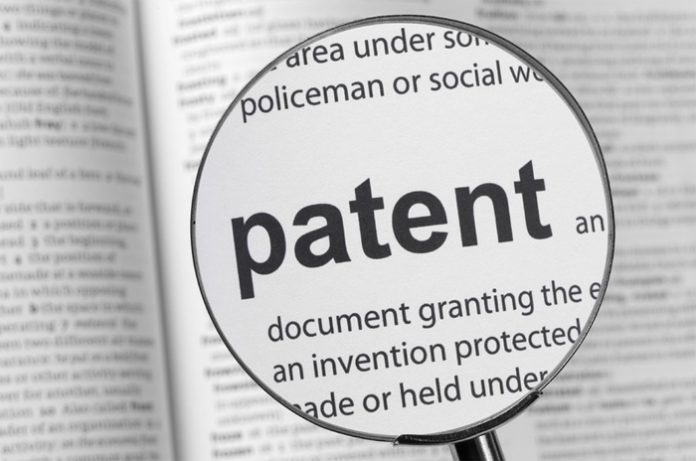The Sufficiency of Disclosure Objection in a First Examination Report
Introduction
A patent is a monopoly granted to an applicant in exchange of disclosing his/her invention in the public domain so that it can benefit the general public during, and at the conclusion of the patent term (20 years). The patent specification often proves to be an essential document for new and improved technology. In fact, one of the functions of the patent system is to encourage new inventions and technological growth. As a result, adequate disclosure of an invention in a patent specification is critical when designing the patent specification. Sufficient disclosure is paramount in a patent specification, because insufficient disclosure is a ground for rejection of patent in all major jurisdictions, including India.
The purpose of this Blog is to provide some insight into how to overcome the Sufficiency of Disclosure objection often raised by Controllers in a First Examination Report (FER).
According to the World Intellectual Property Organization (WIPO)’s statistical database, 45,379 patent applications were filed in India in September 2018. In total, 12,387 applications were approved, whereas 29,789 were withdrawn or abandoned by the applicants. About 3203 patents were refused due to the invention’s failure to meet the patentability standards, which include novelty, non-obviousness, and industrial application, as well as the non-patentability criteria outlined in Sections 3 and 4 of the Indian Patent Act. Apart from the aforementioned criteria, there is another objection that is often raised by the Controllers, and one which is (generally) easy to overcome (as compared to the more technical objections) – Sufficiency of Disclosure.
What is the meaning of Sufficient Disclosure?
As elucidated above, full and complete disclosure of the invention is one of the requirements to obtain a patent. Such disclosure is done in the form of a techno-legal document (specification) which includes drawings and biological material (if applicable).
Right to a patent is a quid pro quo. Patent rights are granted to the right holder to encourage research, development and innovation in the field of technology. To that end, the technical information about the invention should be disclosed and disseminated to other inventors, researchers and engineers.
To this effect, Section 10 of the Indian Patents Act, 1970, combined with Rule 13 of the Indian Patents Rules, 2003 describe the disclosure requirements of a patent application.
Section 10(4):
Every complete specification shall—
(a) fully and particularly describe the invention and its operation or use and the method by which it is to be performed;
(b) disclose the best method of performing the invention which is known to the applicant and for which he is entitled to claim protection;
(c) end with a claim or claims defining the scope of the invention for which protection is claimed;
(d) be accompanied by an abstract to provide technical information on the invention.
The Manual for Patent Office Practice and Procedure (Manual) published by the state that while examining whether a patent application complies with Section 10 of the Indian Patents Act (Sufficiency of Disclosure), the Examiner will look for whether:
- a) the specification is properly titled.
- b) the subject matter is fully and particularly described in the specification.
- c) the claims define the scope of the invention properly.
- d) the Specification describes the best method of performing the invention or not.
- e) the source and geographical origin of the same has been disclosed in the specification if the invention is related to biological material and/or the biological material is used in the invention,
- f) approval obtained from National Biodiversity Authority, (NBA) wherever applicable.
- g) if the applicant mentions a biological material in the specification which may not be described and if such material is not available to the public, the application shall be completed by depositing the material to international depository authority under the Budapest treaty.
- h) Accession Number and date of deposition of the material in the depository institution along with name and address of the depository authority shall be given, if applicable.
Significance of Sufficient Disclosure
The significance of such sufficient disclosure may be understood by a bare disclosure of Sections 25 and 64 of the Indian Patents Act (as reproduced below). Therefore, lack of sufficient disclosure is a valid ground for pre- and post-grant opposition, as well as revocation of a patent.
Section 25. Opposition to the patent —
(1) Where an application for a patent has been published but a patent has not been granted, any person may, in writing, represent by way of opposition to the Controller against the grant of patent on the ground—
(g) that the complete specification does not sufficiently and clearly describe the invention or the method by which it is to be performed.
(2) At any time after the grant of patent but before the expiry of a period of one year from the date of publication of grant of a patent, any person interested may give notice of opposition to the Controller in the prescribed manner on any of the following grounds, namely :
(g) that the complete specification does not sufficiently and clearly describe the invention or the method by which it is to be performed;
Section 64. Subject to the provisions contained in this Act, a patent, whether granted before or after the commencement of this Act, may, be revoked on a petition of any person interested or of the Central Government by the Appellate Board or on a counter-claim in a suit for infringement of the patent by the High Court on any of the following grounds, that is to say—
(h) that the complete specification does not sufficiently and fairly describe the invention and the method by which it is to be performed, that is to say, that the description of the method or the instructions for the working of the invention as contained in the complete specification are not by themselves sufficient to enable a person in India possessing average skill in, and average knowledge of, the art to which the invention relates, to work the invention, or that it does not disclose the best method of performing it which was known to the applicant for the patent and for which he was entitled to claim protection.
Common Objections raised under Sufficiency of Disclosure
Even after all the requirements as specified above by the Manual have been complied with, the Indian Controller may still raise objection(s) under this head. After analyzing thousands of First Examination Reports issued by the Indian Patent Office for patent applications in various fields of technology, in which the basic requirements of sufficient disclosure were met with, we found that the most common objections that are raised under the head “Sufficiency of Disclosure” are as follows:
- a) Non-compliance with Rule 13(7) of the Indian Patents Rules.
- b) Non-compliance with Rule 13(4) of the Indian Patents Rules.
- c) Claims disclose multiple independent claims in a similar category.
- d) Presence of terms such as “further”, “comprising”, “at least” or “plurality”, etc., in the claims.
Overcoming such Objections
Generally, it is recommended to draft the specification such that the background section discusses the existing prior arts, the disadvantage of the prior art and the solution proposed by the present invention to overcome the problems in the prior arts. The Summary section of the specification should discuss the objective of the invention, the technical field to which the invention belongs, the technical problem to which the invention relates and the solution to the problem through the invention and principal use of the invention. Now, in order to overcome the common objections raised under the Sufficiency of Disclosure head, as discussed above:
- a) Ensure that the Abstract discloses the title of the invention, a summary, the relevant figure, reference numerals to identify the various features, and that the Abstract complies with the other requirements mentioned in Rule 13(7) of the Indian Patents Rules.
- b) Incorporate reference numerals (corresponding to the drawings) in the claims to enhance their intelligibility and clearly identify the structural and functional features in the claims.
- c) Manual of Patent Office Practice and Procedures (Manual) of India states that “There may be more than one independent claim in a single application if the claims fall under a single inventive concept. While there is no restriction as to the number of claims, including independent claims, it is advisable to limit the number of claims, as well as the number of independent claims in a single application so that the claims are falling under a single inventive concept.”
- d) Objection for the term “further”, may be contested in the initial stage. However, if the Controller remains adamant, it is recommended to delete the term.
As regards the term “comprising”, in Hoffman La Roche v. Cipla Ltd ., the Hon’ble Delhi High Court acknowledged the term “comprising” as a permissible transition phrase.
As regards the term “at least” or “plurality”, such terms are well accepted across all major jurisdictions, and the Indian Patent Law does not dispute the same either.
Conclusion
While the objections under Section 10(4) of the Indian Patents Act, 1970 in combination with Rule (13) of the Indian Patents Rules, 2003, i.e., the Sufficiency of Disclosure objections may not be as cumbersome to overcome as the other more technical objections such as the lack of novelty, inventive step, or patentability, one cannot deny the importance of complying with such requirements.
With this Blog, we hope to have helped our readers understand the meaning and importance of sufficient disclosure in a patent application and how to deal with some of the most common objections raised by the Controllers in the First Examination Report under the head of Sufficiency of Disclosure.

